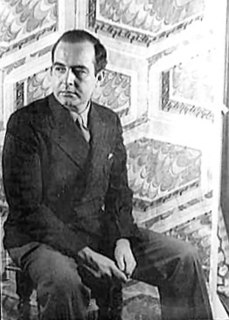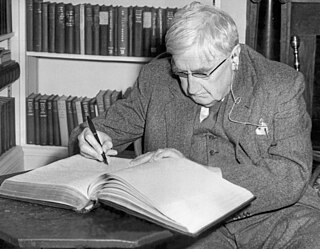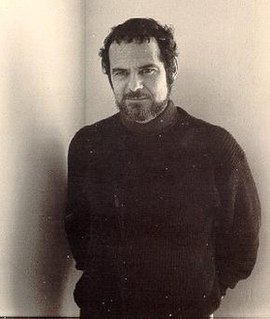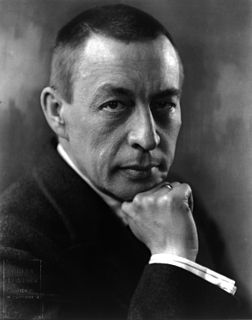Related Research Articles

The Pulitzer Prize for Music is one of seven Pulitzer Prizes awarded annually in Letters, Drama, and Music. It was first given in 1943. Joseph Pulitzer arranged for a music scholarship to be awarded each year, and this was eventually converted into a prize: "For a distinguished musical composition of significant dimension by an American that has had its first performance in the United States during the year."
Shulamit Ran is an Israeli-American composer. She moved from Israel to New York City at 14, as a scholarship student at the Mannes College of Music. Her Symphony (1990) won her the Pulitzer Prize for Music. In this regard, she was the second woman to win the Pulitzer Prize for Music, the first being Ellen Taaffe Zwilich in 1983. Ran was a professor of music composition at the University of Chicago from 1973 to 2015. She has performed as a pianist in Israel, Europe and the U.S., and her compositional works have been performed worldwide by a wide array of orchestras and chamber groups.

Adagio for Strings is a work by Samuel Barber, arguably his best known, arranged for string orchestra from the second movement of his String Quartet, Op. 11.
The Piano Concerto, Op. 38, by Samuel Barber was commissioned by the music publishing company G. Schirmer Inc. in honor of the centenary of their founding. The premiere was on September 24, 1962, in the opening festivities of Philharmonic Hall, now David Geffen Hall, the first hall built at Lincoln Center for the Performing Arts in Manhattan, with John Browning as soloist with the Boston Symphony Orchestra conducted by Erich Leinsdorf.
The Cello Concerto in B minor, Op. 104, B. 191, is the last solo concerto by Antonín Dvořák. It was written in 1894 for his friend, the cellist Hanuš Wihan, but was premiered by the English cellist Leo Stern.
The Symphony No. 4 in F minor by Ralph Vaughan Williams was dedicated by the composer to Arnold Bax.
A London Symphony is the second symphony composed by Ralph Vaughan Williams. The work is sometimes referred to as Symphony No. 2, though the composer did not designate that name for the work. First performed in 1914, the original score of this four-movement symphony was lost and subsequently reconstructed. Vaughan Williams continued revisions of the work into its final definitive form, which was published in 1936.
Ralph Vaughan Williams's Symphony in E minor, published as Symphony No. 6, was composed in 1944–47, during and immediately after World War II and revised in 1950. Dedicated to Michael Mullinar, it was first performed, in its original version, by Sir Adrian Boult and the BBC Symphony Orchestra on 21 April 1948. Within a year it had received some 100 performances, including the U.S. premiere by the Boston Symphony Orchestra under Serge Koussevitzky on 7 August 1948. Leopold Stokowski gave the first New York performances the following January with the New York Philharmonic and immediately recorded it, declaring that "this is music that will take its place with the greatest creations of the masters." However, Vaughan Williams, very nervous about this symphony, threatened several times to tear up the draft. At the same time, his programme note for the first performance took a defiantly flippant tone.

The Symphony No. 9 in E minor was the last symphony written by the English composer Ralph Vaughan Williams. He composed it during 1956 and 1957 and it was given its premiere performance in London by the Royal Philharmonic Orchestra conducted by Sir Malcolm Sargent on 2 April 1958, in the composer's eighty-sixth year. The work was received respectfully but, at first, without great enthusiasm. Its reputation has subsequently grown, and the symphony has entered the repertoire, in the concert hall and on record, with the majority of recordings from the 1990s and the 21st century.
The Second Symphony was written by Charles Ives between 1897 and 1902. It consists of five movements and lasts approximately 40 minutes.
Christopher Chapman Rouse III was an American composer. Though he wrote for various ensembles, Rouse is primarily known for his orchestral compositions, including a Requiem, a dozen concertos, and six symphonies. His work received numerous accolades, including the Kennedy Center Friedheim Award, the Grammy Award for Best Classical Contemporary Composition, and the Pulitzer Prize for Music. He also served as the composer-in-residence for the New York Philharmonic from 2012 to 2015.

Stephen Joel Albert was an American composer.
Nathan Currier is an American composer.
Sergei Rachmaninoff composed his Symphony No. 3 in A minor, Op. 44 between 1935 and 1936. The Third Symphony is considered a transitional work in Rachmaninoff's output. In melodic outline and rhythm it is his most expressively Russian symphony, particularly in the dance rhythms of the finale. What was groundbreaking in this symphony was its greater economy of utterance compared to its two predecessors. This sparer style, first apparent in the Rhapsody on a Theme of Paganini, enhances the emotional power of the work.

The Symphonic Dances, Op. 45, is an orchestral suite in three movements. Completed in 1940, it is Sergei Rachmaninoff's last major composition.
Sebastian Currier is an American composer of music for chamber groups and orchestras. He was also a professor of music at Columbia University from 1999 to 2007.
Harold Shapero completed the Symphony for Classical Orchestra in B-flat major on March 10, 1947, in Newton Centre, Massachusetts. It is written for an orchestra consisting of piccolo, 2 flutes, 2 oboes, 2 clarinets in B-flat, 2 bassoons, contrabassoon, 2 horns in F, 2 trumpets in C, 2 tenor trombones and one bass, timpani and strings. Although labelled "Classical," many of the work's features point to Beethoven rather than Haydn or Mozart, such as "the way in which Shapero paces himself, alternating long passages in the tonic and the dominant, with fast, dramatic modulations often reserved for transitions and developments." Nicolas Slonimsky remarked on how the piece is "premeditatedly cast in the proclamatory key of B-flat major, the natural tonality of the bugle, and ending in a display of tonic major triads." But there are modern features as well, with "the work's orchestration, in general, ... distinctively bright and brassy, and undoubtedly derived a fair amount from Piston and Copland, as well as from the composer's experience as a dance band arranger."
The Trombone Concerto is a concerto for trombone and orchestra by the American composer Christopher Rouse. The work was commissioned by the New York Philharmonic for its principal trombonist Joseph Alessi. It was completed on April 5, 1991, and was first performed by Alessi and the New York Philharmonic conducted by Leonard Slatkin on December 30, 1992, in Avery Fisher Hall, New York City. The concerto is dedicated to the composer and conductor Leonard Bernstein, who died suddenly October 14, 1990. In 1993, the work was awarded the Pulitzer Prize for Music.
Symphony No. 2 is a symphony in three connected movements for orchestra by the American composer Christopher Rouse. The piece was commissioned by the Houston Symphony and completed July 15, 1994. The work premiered later that year and is dedicated to then Houston Symphony director Christoph Eschenbach.
Symphony No. 1 RiverRun is an orchestral symphony in four movements by the American composer Stephen Albert. The piece was completed in 1983 and won the Pulitzer Prize for Music in 1985. The title comes from the novel Finnegans Wake by James Joyce, whose literature served as inspiration for the work.
References
- ↑ Kozinn, Allan (December 29, 1992). "Stephen J. Albert, 51, Composer; Won a Pulitzer for His 'Riverrun'". The New York Times . Retrieved April 8, 2015.
- ↑ Wigler, Stephen (December 29, 1992). "Stephen Albert, his melodious music helped define the 'New Romanticism'". The Baltimore Sun . Retrieved April 8, 2015.
- ↑ "Stephen Albert". Variety . January 4, 1993. Retrieved April 8, 2015.
- 1 2 Schwartz, Steve (August 2007). "ALBERT: Symphony No. 1 'RiverRun'. Symphony No. 2. - Russian Philharmonic Orchestra/Paul Polivnick". Classical CD Review. Retrieved April 8, 2015.
| | This article about a symphony is a stub. You can help Wikipedia by expanding it. |